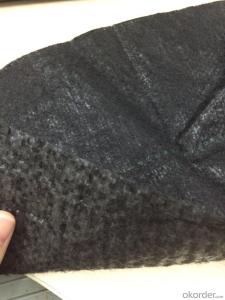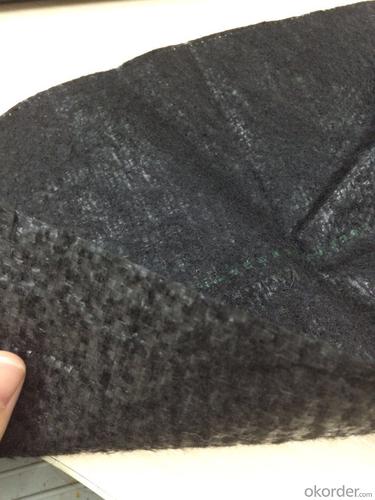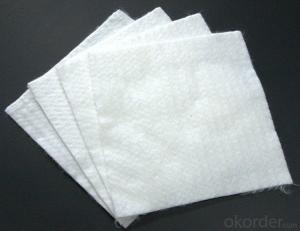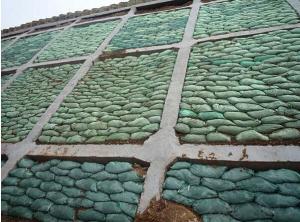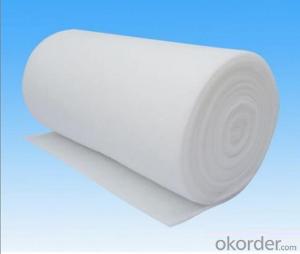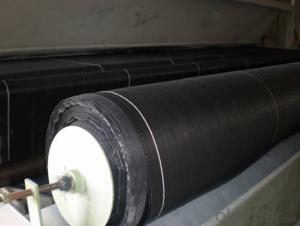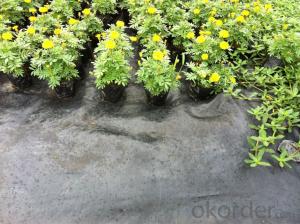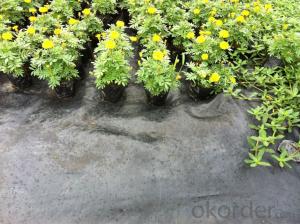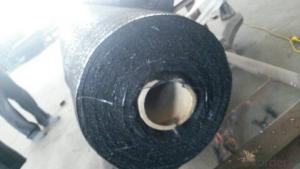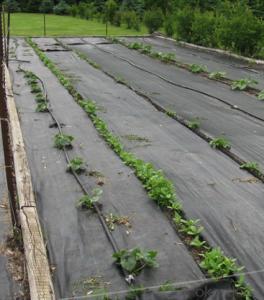Geotextile Malta PP Woven Fabric/Weed Barrier Fabric for Agriculture
- Loading Port:
- Qingdao
- Payment Terms:
- TT or LC
- Min Order Qty:
- 5000 m²
- Supply Capability:
- 100000 m²/month
OKorder Service Pledge
OKorder Financial Service
You Might Also Like
Specification
1.Products description:
The weed barrier fabric is a kind of vertical and horizontal weaving plastic woven cloth.
It has good quality of permeability,water seepage and Prevention and control of weeds.
And the PE film sealing good, poor permeability, water penetration ability is insufficient,
make the plant roots absorbing water ability is insufficient, affect plant growth, increased
permeability is low geothermal could lead to a plant's root rot.
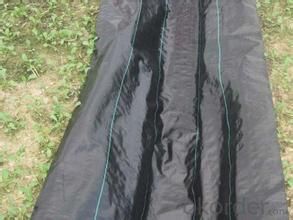
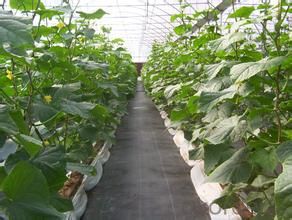
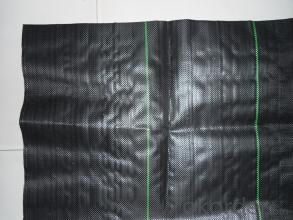
2.Products functions and features:
1)Excellent weed control
2)Excellent UV resistance
3)Moisture,fertilizers,air reach plants to allow for healthy soil
4)Good water and air permeability
5)Exceptional toughness and strength
6)Durable,tear-resistant,anti-rot and anti-mildew
7)Light weight,easy to install,follows natural ground contours
8)Ideal for use in landscaped beds,under decks and walkways
9)Fashionable design,high quality,competitive price
10)Long service life
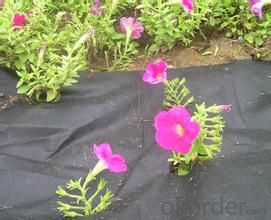
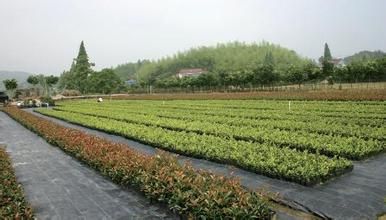
3. Usage:
1.Prevent leakage disposal in landfill or waste water or waste dregs disposing field.
2.River bank ,lake dam ,mine remainings ,resevoir ,tunnel ,liquid storage pool(pit ,mine)
3.Preventing leakage in subway ,basement ,tunnel ,hole .
4.Anti-salt leakage in roadbed and other ground sill.
5.The plane direction laying of dam ,the vertical direction laying for ground sill.used in the
construction fence and waste material field.
6.Used in ground sill of road ,highway ,railway and waterproof layer of welling clay and wet
collapsed loess.
7.Preventing leakage on rooftop.
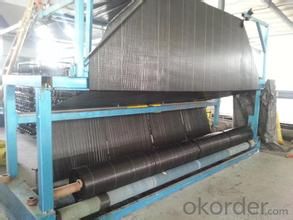
4. FAQ:
Q1: What is your minimum order quantity?
A:The minimum order quantity is 5000 ,but it is negotiable.
Q2:What is your payment terms?
A: T/T,Western Union,Paypal,L/C...
Q3:What is your delivery time?
A:Production time usually costs 2-20 days.
Waiting to cooperate with you!
- Q: How do geotextiles help with subgrade stabilization?
- Geotextiles help with subgrade stabilization by providing a strong, flexible, and permeable layer that separates the subgrade soil from the overlying layers. This prevents the mixing of different soil layers, increases the load-bearing capacity of the subgrade, reduces settlement and deformation, and improves overall stability and performance of the pavement or structure.
- Q: What are the advantages of using geotextiles in stormwater management?
- Geotextiles offer several advantages in stormwater management. Firstly, they act as a filter, preventing fine particles and pollutants from entering the stormwater system, thus improving water quality. Secondly, geotextiles provide erosion control by stabilizing soils and preventing soil erosion during heavy rainfall events. Additionally, these materials aid in water infiltration, allowing stormwater to be absorbed into the ground instead of overwhelming drainage systems. Lastly, geotextiles are cost-effective and easy to install, making them a practical and efficient solution for stormwater management.
- Q: How do geotextiles help with filtration in stormwater management systems?
- Geotextiles help with filtration in stormwater management systems by acting as a barrier that allows water to pass through while trapping and retaining sediments and pollutants. They prevent the clogging of drainage pipes and channels, allowing for effective water flow and reducing the risk of flooding. Geotextiles also enhance the quality of water by removing harmful substances and promoting the natural filtration process, thereby improving overall stormwater management.
- Q: What are the different geotextile filter criteria?
- The different geotextile filter criteria include permeability, retention, durability, and compatibility with the surrounding soil or materials.
- Q: Geotextile with the welding tool where to buy
- Local Hardware & Electrical City, about 5000 or so
- Q: Can geotextiles be used for erosion control in mining sites?
- Yes, geotextiles can be used for erosion control in mining sites. Geotextiles are permeable fabrics that are often used to stabilize soil and prevent erosion by separating, filtering, and reinforcing different layers of soil. In mining sites, where the land is disturbed and susceptible to erosion, geotextiles can be employed as an effective erosion control measure. They can be used to cover exposed soil, reinforce slopes, and retain sediment, minimizing erosion and protecting the ecosystem.
- Q: How do geotextiles help in preventing weed growth?
- Geotextiles help prevent weed growth by acting as a physical barrier that blocks sunlight, preventing weed seeds from germinating and growing. Additionally, they create an unfavorable environment for weeds by reducing moisture and nutrient availability, ultimately inhibiting their growth.
- Q: What are the advantages of using geotextiles in groundwater protection systems?
- Geotextiles offer several advantages in groundwater protection systems. Firstly, they act as a physical barrier, preventing the migration of pollutants and contaminants from seeping into the groundwater. This helps in safeguarding the quality and purity of the water source. Secondly, geotextiles provide filtration and separation capabilities, allowing water to pass through while retaining any suspended solids or particles. This enhances the overall efficiency of the groundwater protection system. Additionally, geotextiles are durable, resistant to degradation, and can withstand environmental stresses, ensuring long-term effectiveness in groundwater protection. Lastly, these materials are easy to install and maintain, reducing labor and maintenance costs associated with groundwater protection systems.
- Q: Can geotextiles be used in riverbank stabilization applications?
- Yes, geotextiles can be used in riverbank stabilization applications. They are commonly used to prevent erosion and promote soil stability along riverbanks. Geotextiles have the ability to filter water while allowing for proper drainage, which helps to prevent soil erosion and maintain the integrity of riverbanks. They can be installed as a protective barrier and provide reinforcement to the soil, making them an effective solution for riverbank stabilization.
- Q: Can geotextiles be used in geogrid reinforced slopes?
- Yes, geotextiles can be used in geogrid reinforced slopes. Geotextiles are often used in conjunction with geogrids to enhance their performance and provide additional benefits such as filtration, separation, and erosion control. The geotextile acts as a barrier to prevent fine particles from migrating through the geogrid, while still allowing water to pass through. This combination of geotextiles and geogrids helps to improve the stability and longevity of reinforced slopes.
Send your message to us
Geotextile Malta PP Woven Fabric/Weed Barrier Fabric for Agriculture
- Loading Port:
- Qingdao
- Payment Terms:
- TT or LC
- Min Order Qty:
- 5000 m²
- Supply Capability:
- 100000 m²/month
OKorder Service Pledge
OKorder Financial Service
Similar products
Hot products
Hot Searches
Related keywords
